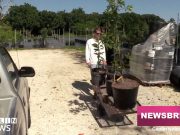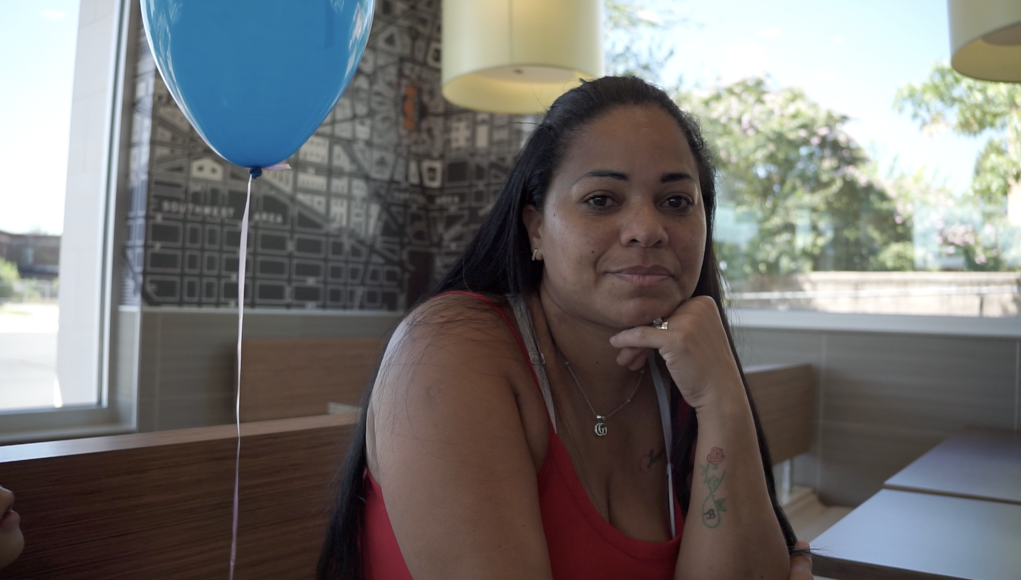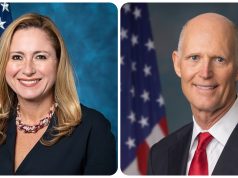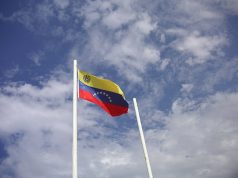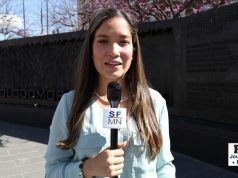To read part 2, click here.
It was getting cold in New York, and Yusbelis Marcano’s five-year-old still didn’t have a winter coat.
“It’s way too cold for the baby, he is not used to weather like this,” said Yusbelis Marcano, a Venezuelan asylum seeker who crossed the U.S. southern border with her husband and four children a year ago. “I’m still not sure what we are going to do this winter.”
Marcano spoke while walking to a church in Midtown Manhattan where she hoped to find donated coats, clothing and some warm food. If she hurried, Marcano said, she might still be able to get there before they closed.
“I’m not used to looking for charity or anything like that,” she added. “Me and my husband have been looking for a job since we got to New York, but it is too hard. There are too many people here in the city.”
Since 2022, almost 400,000 Venezuelan migrants have crossed the U.S. southern border escaping from the decade-long humanitarian crisis that has struck their country.
About 80,000 of these migrants, including Marcano, live in temporary housing in cities like New York and Washington D.C. They lack the necessary documentation to find work and despite recent government action, they face homelessness, food insecurity and a lack of economic opportunities—the same conditions that forced them to leave their country in the first place.
“Never in my life have I had a problem that I did not see an ending to,” said New York City Mayor Eric Adams, “But I don’t see an ending to this.” He was referring to the crisis overwhelming the city’s migrant support network. Since spring of 2022, more than 100,000 migrants have arrived in New York City. The vast majority are Venezuelans who came in buses financed by states like Texas, Florida and Arizona.
“This can’t be, they can’t treat us like this”
In September, The White House issued an expansion on the Temporary Protection Status (TPS) for Venezuelans. This measure will allow almost 500,000 Venezuelan migrants who arrived in the U.S. before July 31 to work legally in the country without the risk of being deported for the next 18 months.
The administration released this measure after New York City declared a state of emergency due to the large number of migrants arriving in the city. “The federal government has all but abandoned New York City,” said Ingrid Martin, Adams’ administration’s chief advisor.
“Finally, someone thinks about us,” Marcano said, “Now we just need to figure out how to get the money to apply for the TPS.”
Although hundreds of thousands like Marcano will benefit from this TPS extension, Venezuelan migrants who entered the U.S. irregularly after July 31 might face direct deportation to Venezuela after the Biden administration resumed limited diplomatic relations with the Maduro regime for the first time in half a decade.
Completing the application process to obtain a TPS and Work Authorization Document can cost migrants more than $500 and several months of wait time. While the U.S. Citizenship and Immigration Services offer fee waivers for people who show financial struggle, applying for these benefits can be difficult without legal assistance.
On August 29, Marcano, her husband, and their four children, none of whom speak fluent English, and who arrived in the U.S. with virtually no savings, took a bus to New York City aiming to get a room in a hotel-turned-homeless shelter in Midtown Manhattan.
“They said to me ‘No, no, no’ you need to leave the shelter.’ They said there were no more funds,” said Marcano, who before arriving in New York lived in a migrant shelter in Washington D.C.
The Marcano family lived for a year in Washington, D.C. before moving to New York. They lived in a migrant shelter administered by Catholic Charities of Washington in southeast D.C. In late August, the shelter administrators told her that the system was reducing the number of beds available due to a lack of funding from the D.C. Office of Migrant Services and that she and her family had to look for a new place to stay.
“We just needed a couple of extra months,” Marcano said. “We already applied for our political asylum, and we are supposed to get a work permit in a couple of months. But they insisted we had to go.”
Catholic Charities and the Office of Migrant Services did not respond for comment.
“We are a big family, all we ask is a place to stay,” she said. “I was selling some food when we were in D.C. Now here, I can’t even do that. We just don’t know what to do.”
Marcano and other migrant women in the D.C. area started selling Venezuelan food and advertising their products through WhatsApp and Facebook group chats.
“This can’t be, they can’t treat us like this,” said Clarisa Gonzales, another Venezuelan migrant, who currently lives in a homeless shelter in Washington, D.C.
Gonzales and her family have lived in Washington for over a year. She complains that housing conditions in city-funded facilities are unsafe and unhealthy.
Gonzales says her 3-year-old daughter is constantly sick due to the unhealthy food the shelter provides and the place’s poor conditions.
“She’s always sick now. And her rashes, I’m sure it’s because of the food they give us.” Gonzales and her family live in a migrant shelter funded by the D.C. Office of Migrant Services. The shelter they stay in, she says, has mold, bed bugs, and even at times spoiled food.
Marcano, Gonzales and their families arrived in Washington D.C. over a year ago due to irregular conditions. They got to the District, after an almost 30-hour drive on a bus subsidized by Texas and ordered by the state’s Republican governor Greg Abbott, in October of last year.
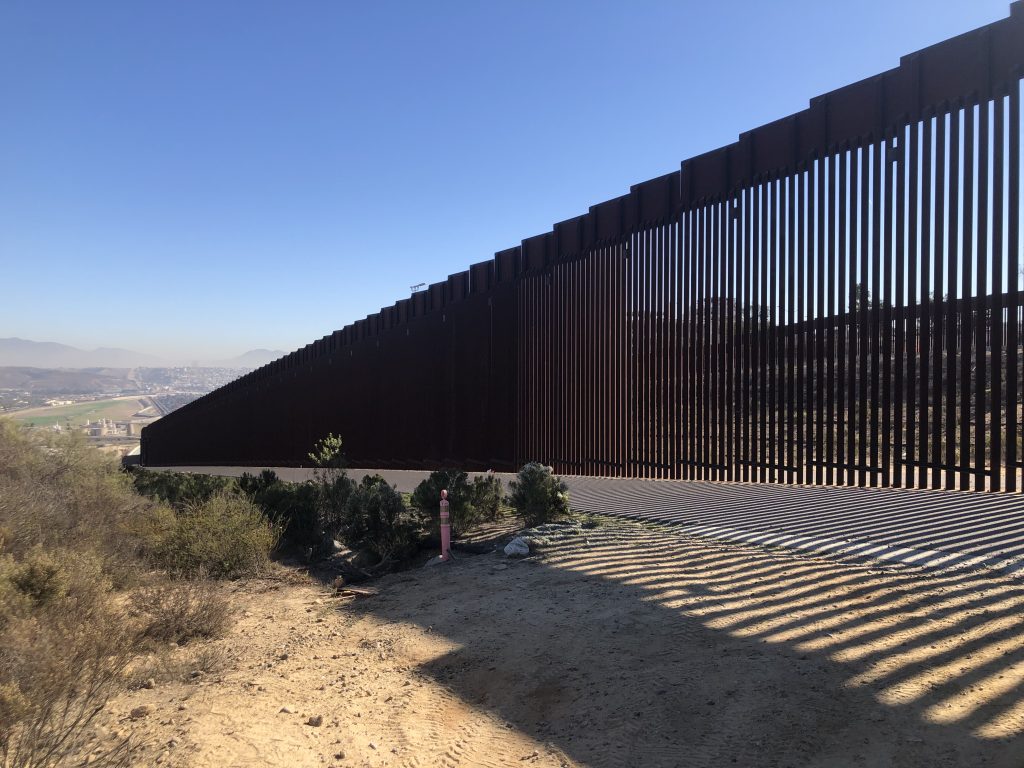
From El Paso to the Hill
Since 2022, conservative politicians in several southern states have allocated millions of taxpayer dollars to transport migrants to cities in the northern United States like Washington and New York, liberal bastions that have historically voted for pro-immigration policy and politicians.
In the last year, Abbott and Florida Gov. Ron DeSantis, who oversee states that have received millions of migrants in the last decade, made these relocation efforts central parts of their political platforms.
And in the case of DeSantis, who paid to move immigrants from Texas to Massachusetts without even a stop in the Sunshine State, this relocation strategy became part of a tanking presidential campaign.
Texas, Florida, and the even more liberal Arizona, have collectively allocated over $57 million to relocate migrants out of their states in 2023. Texas leads the list with $40 million.
Border states like Texas have been dealing with an overwhelming migrant influx since travel restrictions receded after the COVID-19 pandemic.
Many who reach the U.S.-Mexico border go to tortuous lengths to reach American soil. This is a taxing process, on both a personal and economic level, leaving thousands of migrants, who are already escaping desperate conditions, unable to support themselves.
These relocation policies, along with other measures like the contested buoys with saw-blades that the Texas state government installed in the Rio Grande earlier this year, are intended as deterrence measures to keep migrants from coming illegally to the border according to Miami-based civil rights attorney Melba Pearson.
These measures, Pearson says, are ineffective and do little to prevent illegal immigration to the U.S.
“The outcome of relocating migrants is cruelty,” Pearson said. “We’re trying to use this as a way to deter future people from coming across the border, but that does not address the underlying issue of why people are coming,” Pearson added.
“If they’re coming here to flee instability, war, poverty. Moving them from the state of Texas to another state will not take care of that underlying issue,” Pearson said.
Pearson argues that migrant relocation policies create artificial friction for immigrants to normalize their legal status and reach economic stability by distancing them from cities with established immigrant communities that might serve as a support network, making it difficult to find work or accessible legal assistance.
For Pearson, this wave of immigration deterrence policies exists within a long precedent of institutionalized discrimination in American migratory policy.
“Historically, we have not been great to immigrants, despite the promise in Ellis Island of ‘give us your poor and your tired,’ the truth is that in some contexts we might not be willing to fulfill this promise,” Pearson said.
According to Pearson, historical instances of discrimination like World War II-era Japanese internment camps, or the discrimination that Irish and Italians faced during the nineteenth and twentieth centuries point to a deeper issue in American political tradition.
“And the reality is that no party has fully gotten it right, we’ve had Republicans in power and they’ve not been able to do anything in terms of immigration reform. And we’ve had Democrats in power and they’ve not been able to do anything on immigration reform,” Pearson added.
There must be real legislative willpower, Pearson argues, to be able to address the deeper issues in the migratory system.
“We need to be able to limit immigration in a humane manner, at the end of the day we are a country of limited resources,” Pearson said, “but we need informed bipartisan or nonpartisan policies that take into consideration the concerns of both political aisles.”
“If we don’t come to that, we are going to continue to be dealing with all of this patchwork and ‘solutions’ that just kick the can down the road and just concentrate the problem in different areas,” Pearson said.
“I never thought I would have to go through a jungle”
Marcano’s tortuous path to arriving in the United States is a powerful reminder that most Venezuelans in the Northeast had no intention of ending up as political pawns in the wake of a new Presidential election cycle.
“No matter how hard we worked in Venezuela, and we worked really hard (…) there was never enough money,” she says. “
Before deciding to migrate to the U.S. Marcano and her family fled from Venezuela to Colombia in 2016, in the midst of one of the deepest economic crises that the country had ever seen.
“Every day prices would go up and starting a life in Colombia wasn’t easy either,” Marcano adds. “But with time you start molding yourself to the situation and eventually you start doing good.”
After four years in Colombia Marcano and her husband had managed to start a small restaurant near Cartagena supported by the then-growing tourism industry in Colombia.
“I thought we were finally going to do well, but in the end, everything was a fairytale,” she says.
During the height of the COVID-19 pandemic, Marcano and her family had to close down their business and return to Venezuela, where they owned an apartment and didn’t have to pay rent.
After arriving in Venezuela in 2021, Marcano and her husband decided to leave their country once again, but this time, they would head north to the United States.
“I said to my husband, babe we can’t keep swimming against the current,” Marcano told her husband after seeing the hardships that led them to leave Venezuela were still a reality.
“I told him ‘we need to look for a better future,’ because we have children, we have two young children, one of them is four and the other one is ten, they deserve a better future,” Marcano said.
Despite the hardships people in Venezuela have to face, Marcano says that leaving Venezuela a second time was not an easy decision either. “I’ve never dreamed of coming to this country, this has never been my dream,” Marcano said.
“You know, I love, I long for my country. and we have never been a rich family but in the past, we could make it to the end of the month,” Marcano added.
“But then everything just got harder, there was no food, no work, and even the police would act as thieves themselves,” Marcano said. “And that’s why we decided to come here, not that this has ever been my dream, I didn’t really want to come here, much less did I want to go through the jungle to do so,” Marcano said.
To get from South America to the U.S. southern border, migrants have to make a 2000-mile trip, passing through more than seven countries and a 15-day trip through the Darien Gap, an inhospitable jungle on the border between Colombia and Panama where migrants not only have to face the elements but also risk encounters with drug traffickers and guerrillas who use Darién as a settlement.
Despite the dangers that this trip involves, in 2022 more than 248,284 migrants crossed the 60-mile stretch, trying to reach Panama and continue their trip to the United States. According to the United Nations High Commissioner for Refugees, this number is likely to double during 2023.
“To be honest, I never thought I would have to go through a jungle,” Marcano said. “I thought that was one of those things that you only see in cartoons or crazy people on TV doing,” Marcano said.
For many migrants like Marcano, crossing the Darien is just the beginning of a dehumanizing journey to reach the United States border and request political asylum.
Once they arrive at the border there is no guarantee of a better outlook either. The policies to request asylum once at the border have changed drastically during and after the pandemic, but in general, migrants have to reach one of the limited access points at the border or cross the desert hoping to be found by US border patrol.
“When we crossed the border, [the U.S. border patrol] put us in a place people call ‘the freezer,’ we spent four days in that place. I was put in a cell with my children, and my husband was put somewhere else,” Yusbelis Marcano said. Marcano’s older son, who is 17, spent almost 20 days at the migrant detention facility before being released.
Federal investigations have found “unsafe and filthy” conditions with “negligent” medical care in U.S. Immigration and Customs Enforcement detention centers, according to a report by the Department of Homeland Security’s Office for Civil Rights and Civil Liberties
After receiving an alien registration number, a tracker that would allow the family group to later apply for political asylum, they lived in an El Paso shelter for three weeks before taking a bus to D.C.
They spend days, weeks, or even months waiting in a migrant detention facility for an alien tracker number, a temporary identification that allows them safe entry into the U.S. while awaiting a decision on their immigration status.
For most Venezuelans, this process involves requesting political asylum, a lengthy process that can take months just to obtain a work permit to be allowed to work legally in the country.
“All we want to do here is work, and make this place better,” Marcano said, “I don’t care for luxuries, and I am tired of asking for help. All I want is a work permit, and for me and my husband to have the means to support the family.”
Then she added: “All I want is stability, nothing fancy, nothing crazy, just stability to provide my children with a future where they can grow and be professionals and not have to care if they would have enough to eat the next day.”




